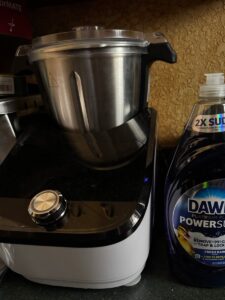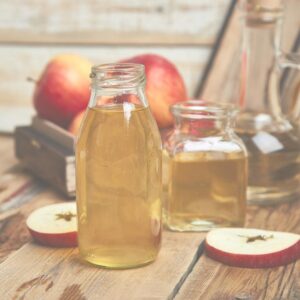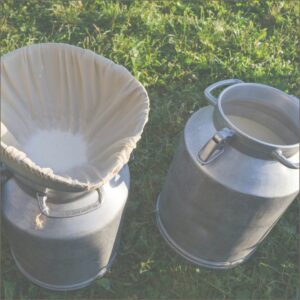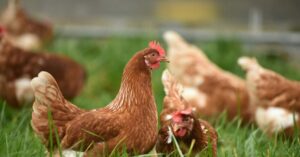
Submitted by a PMJS Member
Like many of you, my husband and I used Artificial Insemination (AI) on two of our cows. This was a new method for us, a ‘rite of passage’ in homesteading. Be forewarned, it doesn’t always take the first time around. Ask me how I know.
Before I tell you what we did wrong, I want to highlight some of the things we did right.
What We Did Right
- Minerals; Our cows and heifers all have daily access to a loose mineral bar with 20 free-choice minerals.
- Genomic fertility and inbreeding; We know our herd’s lineages and invested the money and time upfront to have genomic testing done on all of our herd. This was money well spent, in my opinion, because we aren’t left guessing if our cows have poor fertility or the bull chosen is too closely related.
- We hired an experienced AI Tech; I’ll tell you what, this nervous cow mom was quickly put at ease to see this guy with decades of experience in his comfort zone while working with my cows. His confidence in handling the straws made the whole process go smoothly while I watched from the sidelines. I had peace of mind that I wasn’t taking any risks in this aspect of the breeding process.
The First AI Breeding Attempt May Be Unsuccessful
Unfortunately, it’s common for cows, and especially heifers, to not settle on the first AI breeding attempt. Despite doing all the right things, our investment in the straws and an AI Tech didn’t result in either of our cows being settled on the first attempt. So, I did a deep dive as we entered the fall with two open cows to assess what could have attributed to this and what can be improved before we try again.
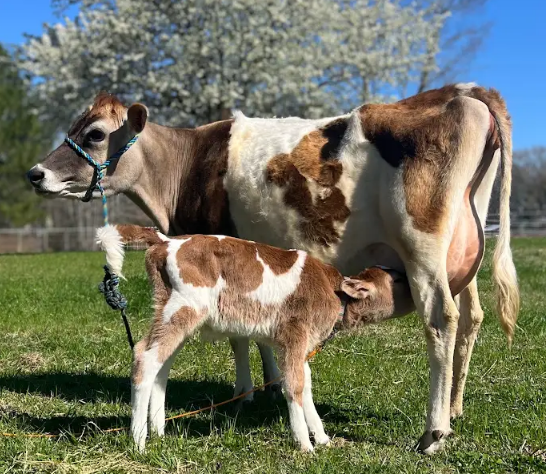
The process of becoming pregnant
involves a lot of tiny things
all going right in the perfect timing.
Options to Consider for Tough-to-Settle Cows

The process of becoming pregnant involves a lot of tiny things all going right in the perfect timing. Some of it we can influence but much of it is beyond our control.
- If you aren’t confident in your mineral program consider giving a shot of MultiMin 90 at breeding. This has helped many hard-to-settle cows.
- I learned that trying to breed them during an excessively hot summer worked against us. Multiple days of “real feel” at 112°-118°F was less than ideal. We were ALL uncomfortable through that heatwave! So, with the cooler temperatures upon us, I’m hopeful this will alleviate that added physical stress on our cows. I’ve never met a cow that didn’t prefer cold days over hot ones.
- Another factor we’re considering is the ongoing energy needed to produce for milking twice a day. As we endeavor to get them settled this fall, we’ve decided to all get a break and moved them to once-a-day milking. Our hope is that this decreased demand for production will improve their body condition in the weeks ahead, giving them a better chance of conceiving.
- On the topic of body condition, we’re considering their nutrition and Body Condition Score (BCS). Observing them daily is important as we lead up to the next AI attempt. We want to ensure that besides not being too fat or too thin before AI service, the cows should be in a positive energy cycle. They should be maintaining a healthy weight easily or putting on weight as needed but not losing condition.

at the school of your choice.
- Identifying their heat cycle is very critical to timing the AI service at the right point of the cycle. In the perfect situation she’s bred 12 hours after the first time she stands to be mounted. If you’re unable to identify a heat due to your work schedule, uncooperative cows, or silent heats, consider working with your Tech to do a CIDR-timed protocol to pinpoint the exact time to breed. A natural heat will always be more fertile though. If you’ve seen heat cycles, you can try lining up a natural heat with the CIDR-timed to get the best results. You may consider breeding twice, twelve hours apart to increase the chances of hitting that timing exactly right.
- If you’ve tried several times and you know she’s cycling consider having your Vet do an ultrasound exam to see if she’s cystic. A cyst on the outside of the ovary can sometimes be “popped” by giving her a shot of Lutalyse but a cyst inside the ovary will block her ability to get pregnant. Ovaries cycle one at a time in alternating months. She might be able to settle from the good ovary in the other months. Cystic cows often do better when covered by a bull.
- Try switching to a straw from another bull. Sometimes, this gets it done. I don’t have a scientific reason but maybe his fertility is higher or the genetic pairing is more favorable.
God started us on this journey and I have faith He’s going to be with us while I keep learning.
